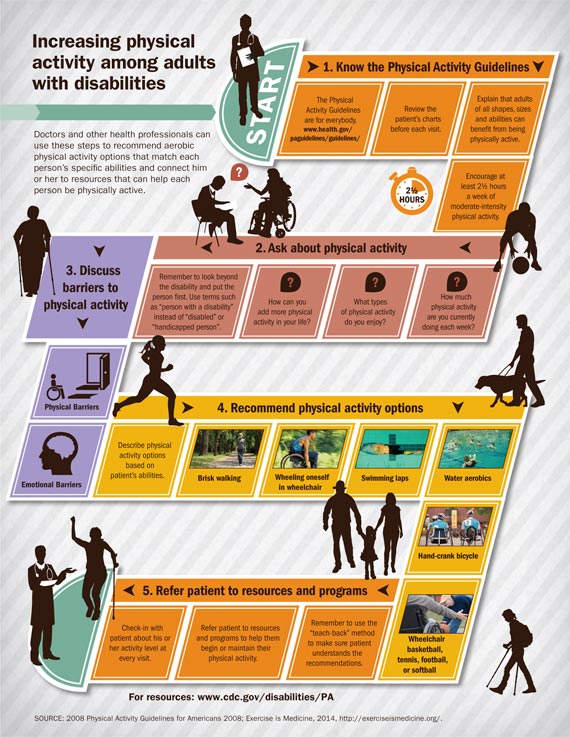Find the Right Care for You
Cerebral Palsy Adult Transition Study
Find the right care | Adopt healthy habits | Transition into adulthood
 You know how important it is to have a safe and enjoyable physical activity routine in your life, but individuals with cerebral
palsy face many challenges to staying active.
You know how important it is to have a safe and enjoyable physical activity routine in your life, but individuals with cerebral
palsy face many challenges to staying active.
Yet, exercise is one of the most important healthy behaviors for you. It is extremely important that you find a program that will fit your lifestyle and your abilities. Aerobic exercise increases heart and lung functions, improves weight and cholesterol,
and helps you gain independence. It also protects against cardiovascular and chronic diseases—and improves mental health.
You should discuss your physical activity needs with your doctor to design a healthy and safe exercise program tailored to you. A care team (physician, therapists, and lifestyle counselor) can recommend options that match your abilities.
Adults with disabilities should try to get at least two hours and 30 minutes of moderate-intensity physical activity a week. This can include activities such as swimming, walking, or stationary biking.
Use these five steps recommended by the Center for Disease Control and Prevention to increase physical activity among adults with disabilities:
- Remember that physical activity guidelines are for everybody
- Ask about physical activity
- Discuss barriers to physical activity
- Recommend physical activity options
- Refer patients to resources and programs
For more tips and information, visit the links below.
- CDC Vital Signs: Adults with Disabilities
- The Surgeon General's Call to Action to Improve the Health and Wellness of Persons with Disabilities
- CDC Promoting the Health of People with Disabilities
- Office of Federal Contract Compliance Programs Know Your Rights Disability Rights Fact Sheet
- National Council on Disability: The Current State of Health Care for People with Disabilities
- United Cerebral Palsy
The Cerebral Palsy Adult Transition study is supported by the National Institute on Disability, Independent Living, and Rehabilitation Research, Department of Health and Human Services, grant #H133G130200.